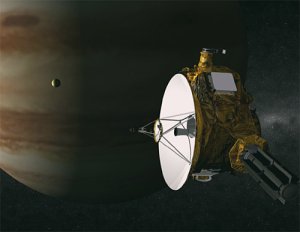
NASA’s New Horizons spacecraft is currently on its way to becoming the first spacecraft ever to reach Pluto--the object that, whatever you choose to call it, skitters along the frontier between the Outer Solar System and the more distant reaches of the Kuiper Belt.
It may seem to be a bit early to start talking up a space mission that won't reach its destination until 2015--especially since most of what it will do over the next eight years is coast through practically empty space. Too early to talk up Pluto, perhaps, but timely to make mention of an encounter New Horizons made in February this year, with Jupiter.
So what's a spacecraft built to probe the dark reaches of Pluto's realm doing at our Solar System's largest planet? In a nutshell, New Horizons is getting directions--using Jupiter as a planetary version of a gas station. But NASA didn’t waste the opportunity to roll down the window and snap a few tourist shots (700 of them, in fact) of the scenery along the way….
While NASA utilized Jupiter's powerful gravity to change New Horizon’s course and give it a substantial gravity-assisted boost in speed, it put the spacecraft’s science instruments to use taking pictures of Jupiter, its thin rings, and its four large moons--each of which is a story and world of its own.
Here are a few highlights of the images taken during New Horizon's Jupiter encounter in February:
